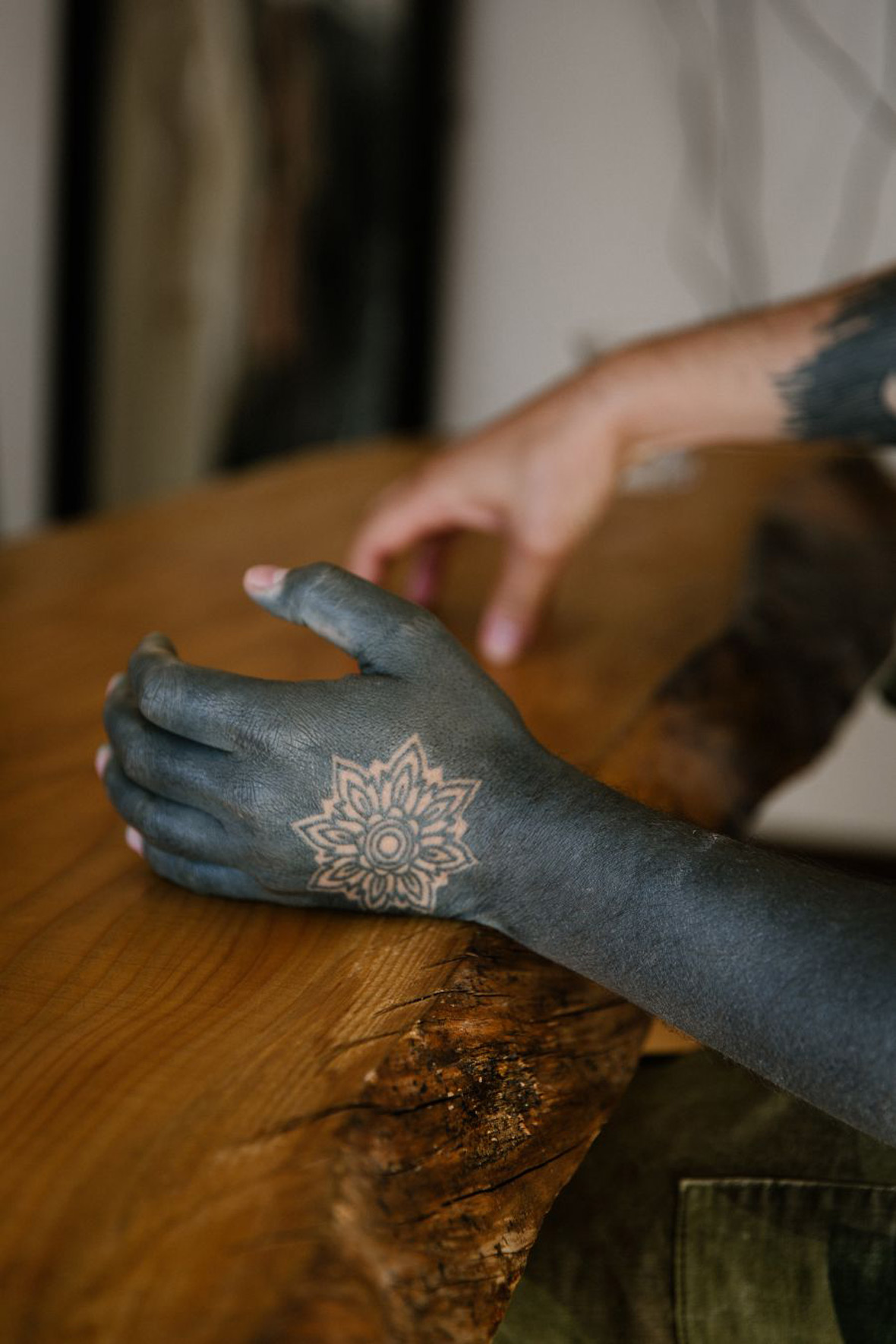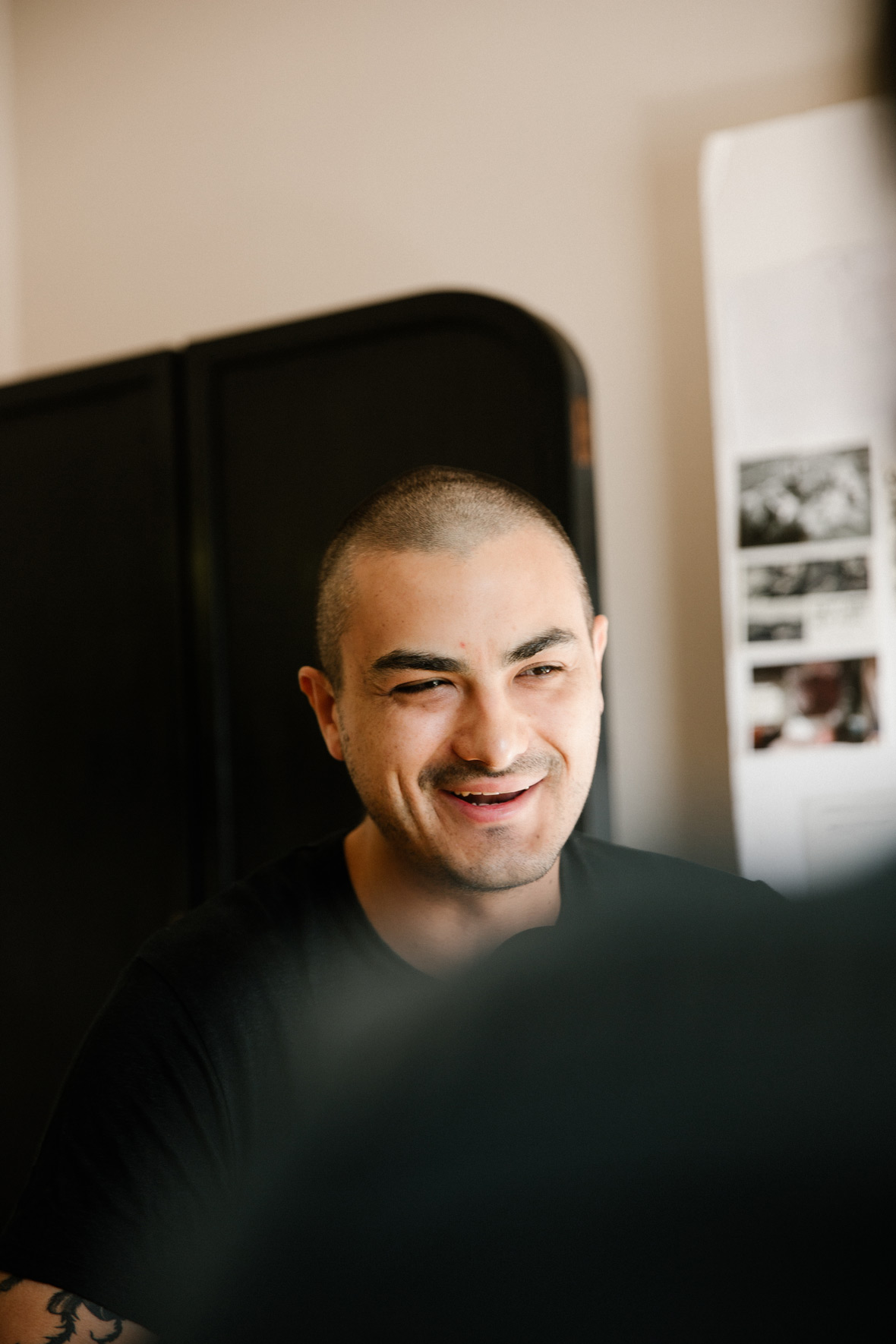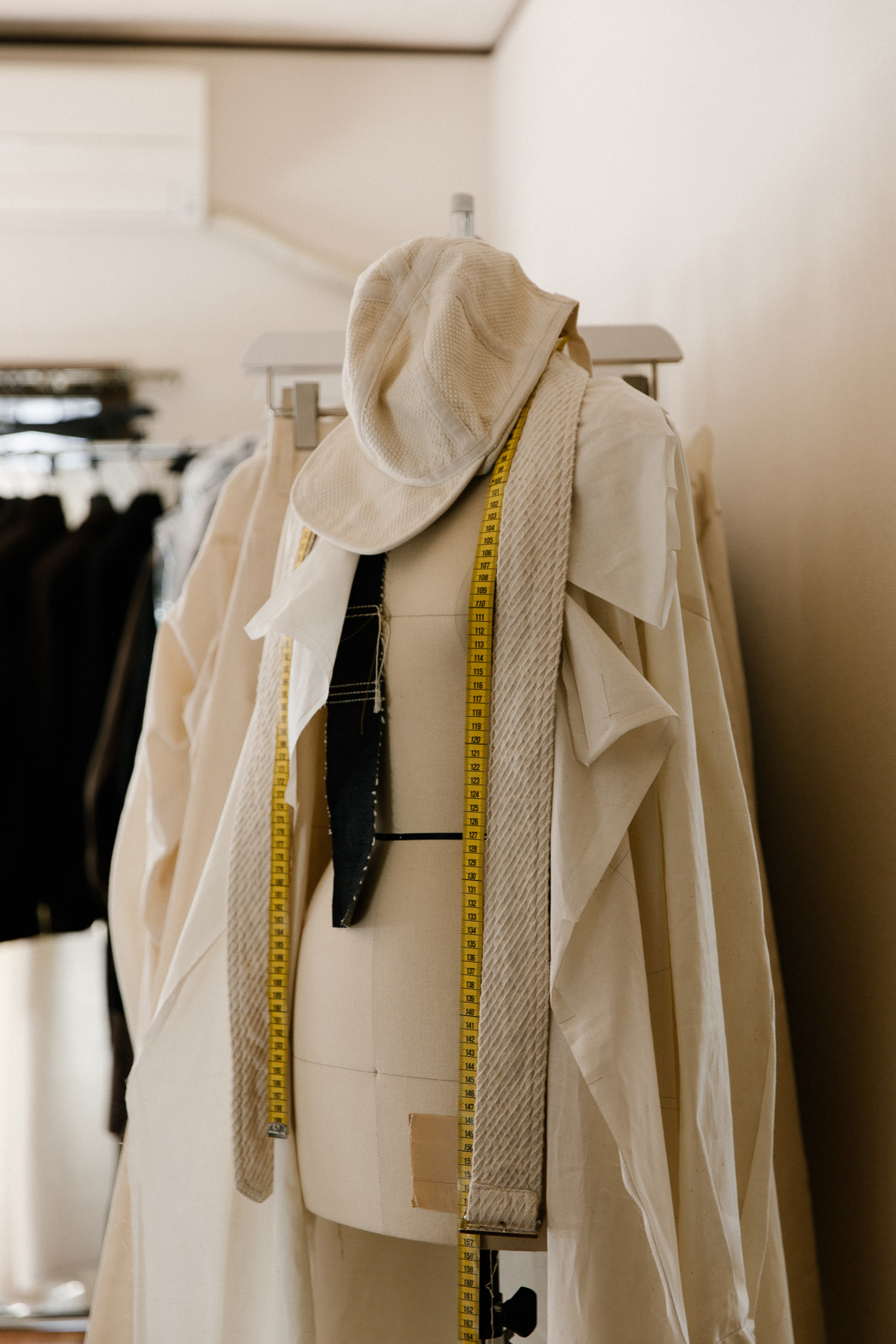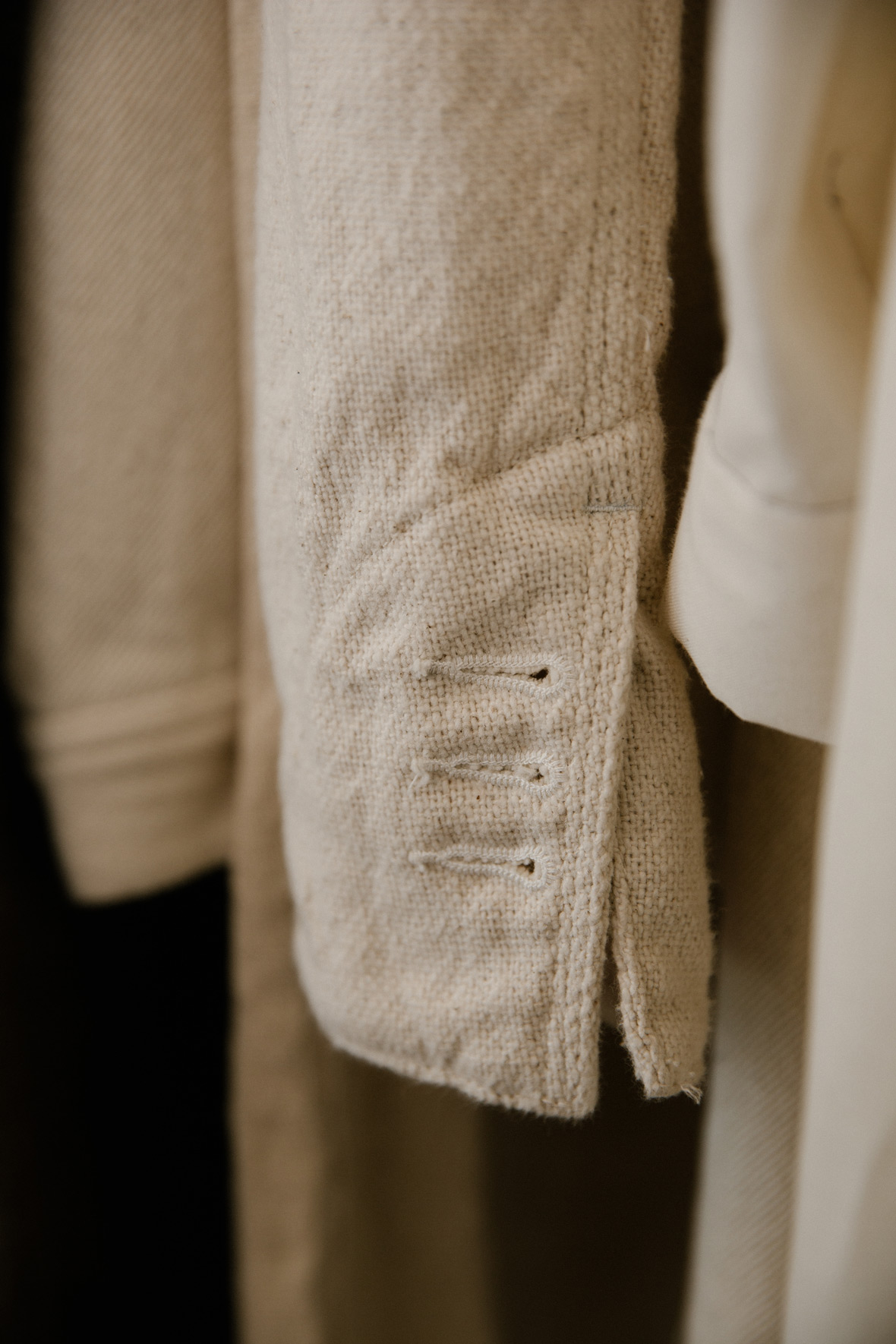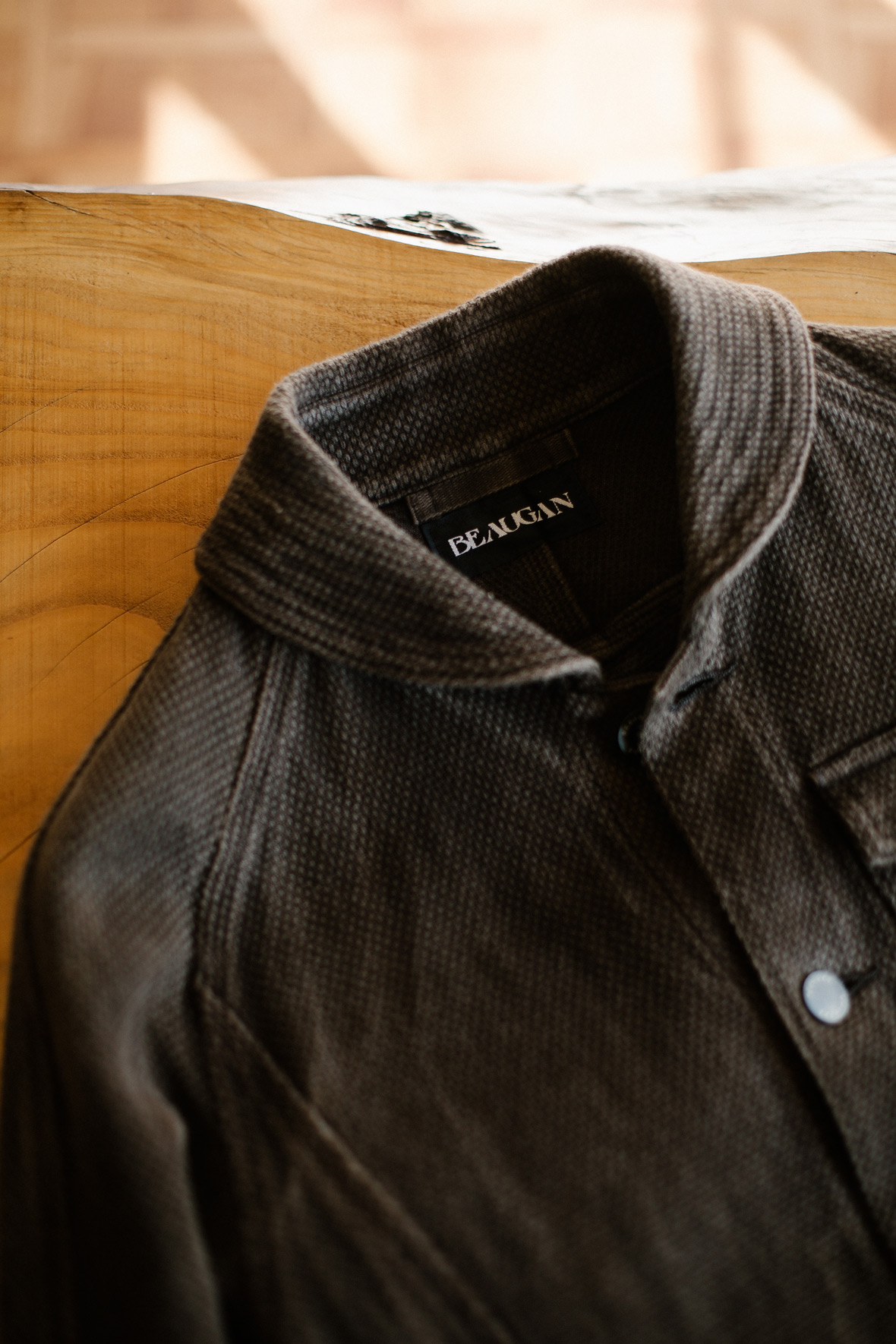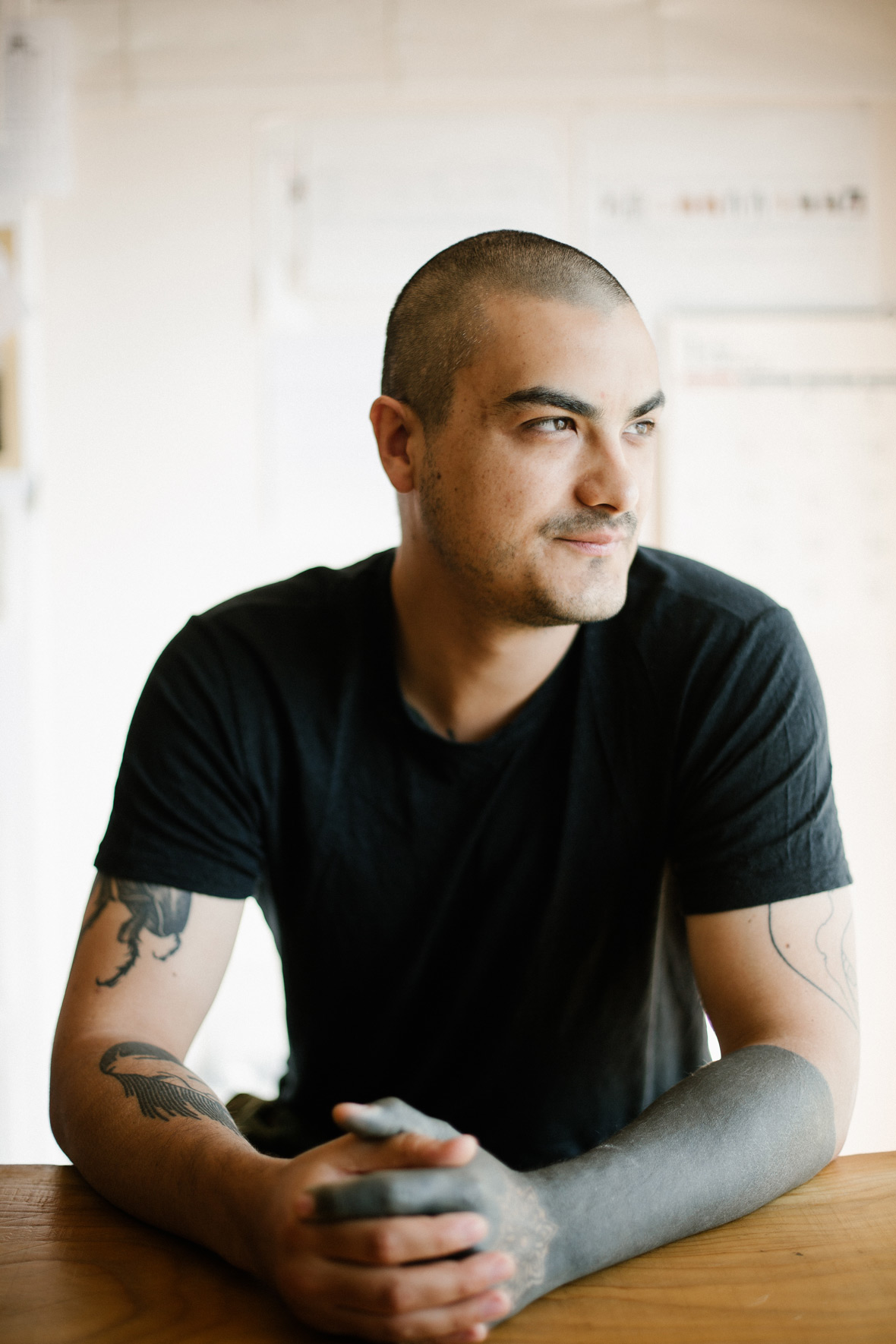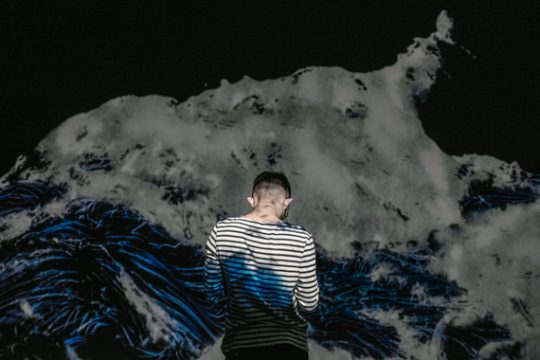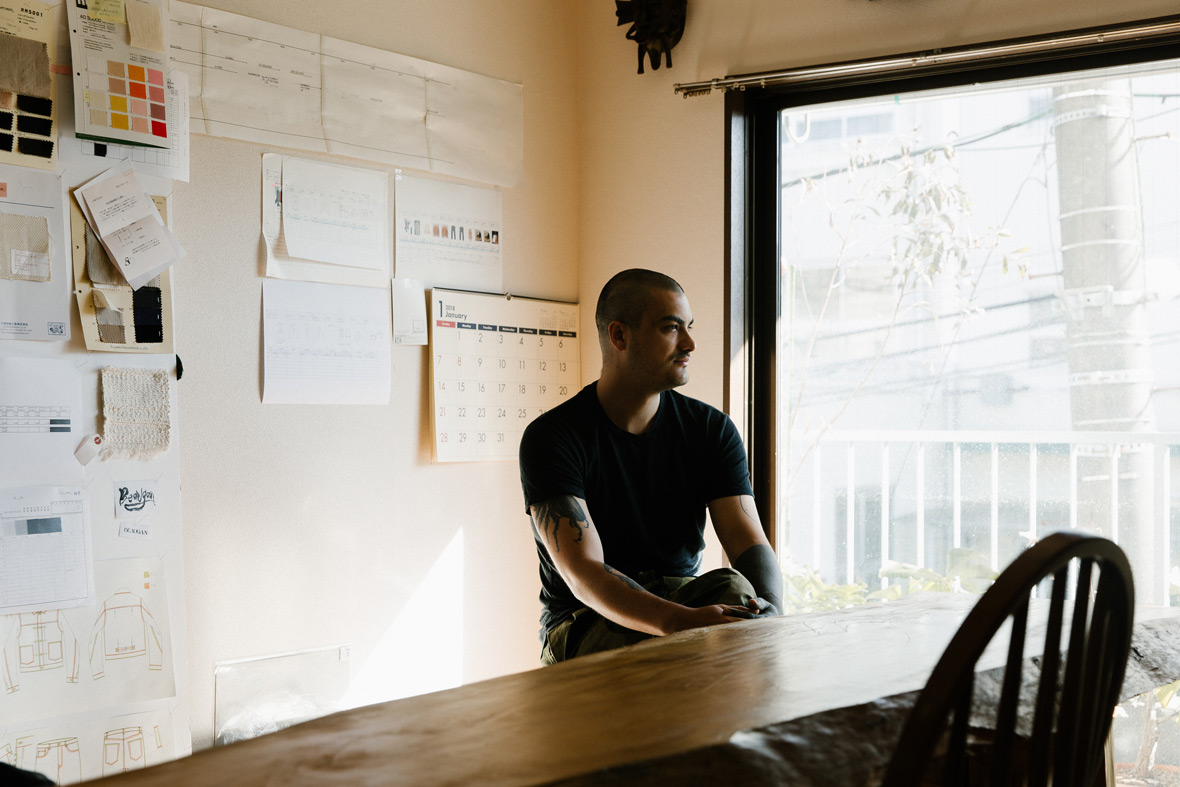
This story is part of a content partnership and media exchange between Neocha and MAEKAN. To see more of MAEKAN’s content on Neocha, click here.
Even before I met Christopher Hancy, the 31-year-old Australian fashion designer behind BEAUGAN, I could understand why he’d choose to make his home in Tokyo. Each time I visit, I start making plans to move there. To an outsider like me, the city has vast creative depths and seems to encourage exploring them.
Hancy’s family arrived in Australia at the start of the nineteenth century, aboard one of the first ships from Europe. But Hancy looks nothing like the prototypical light-skinned blonde Aussie surfer, and when growing up, he was often asked where he was from. “That’s where my identity problem comes from, I guess,” he laughs. For him, his inability to fit in as a kid partially explains his interest in how individuals define themselves through fashion, art, and music.
19 世纪初,Christopher 的家人成为第一批乘船登陆澳大利亚的移民。成长的过程中,Christopher 经常被问是哪里人,因为他看上去一点也不像浅肤色、金发碧眼的澳大利亚人。“这可能就是我的身份认同问题的由来吧。” 对他来说,少年时无法融入社会的困扰让他开始热衷于创造文化,通过时尚、艺术和音乐去定义自我。

In high school, Hancy wanted to become a doctor but failed the necessary exam. His backup plan was to become a lawyer, but he found solving other people’s disputes boring. He then tried his hand at something completely different by studying fine art at a school taught completely by practicing artists. At the time, however, he thought life as an artist would be full of struggle and unhappiness. Eventually he happened on modeling, which introduced him to the fashion world. “There’s this commercial aspect where everything is deadlines and crunch times to make some kind of product which then they want to sell,” he says,“but at the same time they’re creating a fantasy, so it has the same aspirations as art.” After ten years of experience in fashion, Hancy remains drawn to creating both quality products and beautiful things, but not mere fantasies.
高中的时候 Christopher 想成为一名医生,但并没有考上。他的备案是成为一名律师,但他发现要一直给其他人处理事故和金钱纠纷,是挺无聊的。之后,他又尝试了完全不同的领域:进入一家由在职艺术家教学的学校修读美术专业,但是当时的他认为艺术家生活只能是充满挣扎与不快乐。
后来他偶然成为了模特儿,开始踏入时尚界。Christopher 之所以对时尚感兴趣是因为其中的商业性,“所有事情都关乎最后期限,在紧凑的时间中制造出某种你想销售的产品。这也是在创造一种幻想,从这一点上来说,时尚与艺术共享着相同的渴望。” 从事时尚行业十多年后,Christopher 对于创造质感和美丽兼具的事物依然热情不减。
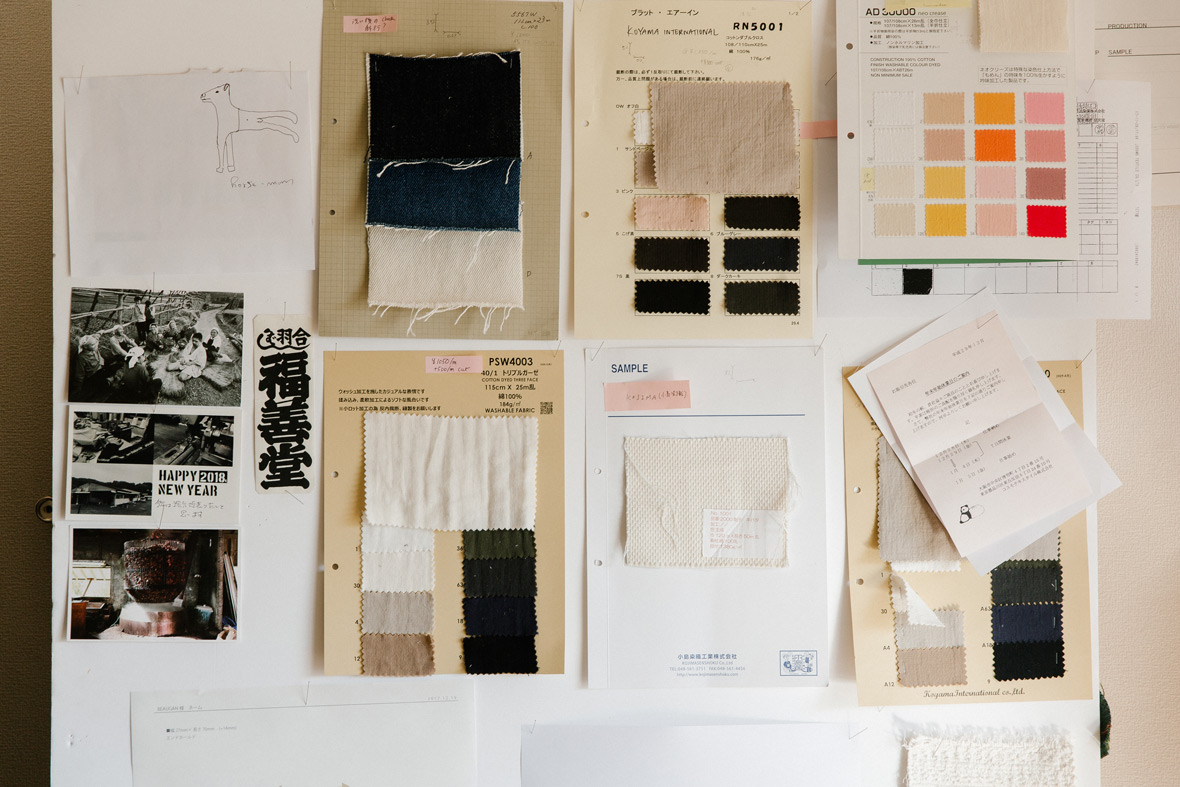
“There are so many young brands and everyone is trying to outdo each other, smashing out over-the-top stuff,” says Hancy. He concedes that there’s a place for spectacle-like work, but he wants no part of over-the-top style. “It’s boring to be doing that. For me, that’s the easy route. That’s the easy way to go, creating this extravagant showpiece stuff because that’s my background.”
Contemporary fashion is intent on “selling a fantasy, selling a dream that doesn’t exist,” he says.“I want to do something more difficult, which is showing beautiful things in everyday life.” That’s why, in early 2017, Hancy created BEAUGAN. He seeks to reveal the existing beauty of the natural world and everyday life, and wants to share this concept with other designers and creative people.
Christopher 告诉我:“现在有非常多年轻的品牌,每个人都想要超越别人,不断推出一些浮夸的作品。” 他承认,自己也是一位年轻的设计师,而浮夸的作品确实有其市场,但他完全不想参与这种竞争,也不喜欢这种纯粹夺取注意的噱头式设计风格。“这种做法其实很无聊。对我来说那只是一种捷径,是最轻松的路,因为这是我之前学的东西。”
在他看来,当代时尚界是以 “出卖幻想和不存在的梦想” 为目标的。“但我想展示出更难得的东西,那就是日常生活中的美。” 他补充道,这也成为了 Christopher 在 2017 年年初创立品牌 BEAUGAN 的初衷。他希望能展示出自然界和日常生活中既有的美,也希望这个理念能得到推广,传达给其他设计师和创意人。
“I want to do something more difficult, which is showing beautiful things in everyday life.”
“我想要做更难一点的事,也就是展示出日常生活中的美。”
BEAUGAN is Hancy’s vision of “clothing that’s very normal.” To him, “normal” does not mean simple, either in terms of concept or manufacturing. The first collection, Fall/Winter 2017, consisted of 42 separate brown and black variants of 22 designs. Each article’s unique color is produced through dorozome, a mud-dying technique from Japan’s Amami island. The art has remained largely unchanged for 1,300-years, thanks to the island’s distance from the mainland and the Amami artisans’ dedication to sustainability. Tree bark, dried coral, mud, and clay found on the island are used in the different steps of the dying process. Much like denim, Hancy’s dorozome clothing will develop character over time, changing in color and patina depending on the wearer.
BEAUGAN 代表了 Christopher 的愿景——创作 “正常的服装”。对 Christopher 来说,“正常”并不意味着简单,无论是在理念或是制作方面。他的首个作品 2017 秋冬系列共有 22 款设计,分别以棕色和黑色演绎成 42 件独立的作品。每件作品的色彩都是独一无二的,采用了源自日本奄美大岛(Amami)特有的“泥染”技术 (dorozome) 。因为奄美大岛与日本本岛隔绝,加上当地工匠致力于永续发展,使得这种已有 1300 年历史的染色工艺得以完整传承。这种独特的染色工序中会运用到的原料包括岛上的树皮、干珊瑚、泥土和粘土等等。和牛仔布一样,Christopher 的泥染服装也会随时间推移,在颜色上发生变化,随着穿者呈现不同的褪色效果,从而展现不同的个性。
Dorozome artisans labor over their materials and garments by hand, and the process has a built-in timeline that cannot be rushed. Hancy wants BEAUGAN to represent an alternative to the fast-paced cycles of flashy contemporary fashion introduced to him during his studies at the Royal Academy of Fine Arts in Antwerp. His graduate collection in 2012 consisted of dramatic streetwear-inspired pieces with big silhouettes. It was so well received that each item from the collection was snatched up by a different name in the fashion industry.
When he launched BEAUGAN, these same supporters were confused. “When you compare it to my previous work, it’s much more toned down,” he explains. After graduating, Hancy became disillusioned by the excessive way fashion designers create and the excessive way people consume. He decided to take a step back and rethink what he wanted to achieve. “I didn’t want to become a particular kind of person. I knew how to make all these showpieces, but I didn’t know how to make clothing. I knew fashion, but I didn’t know what goes into fashion.”
泥染工匠必须手工处理各种材料和服装,整个染色过程自有一套严格的流程,不能操之过急。在比利时的安特卫普皇家美术学院(Royal Academy of Fine Arts)就读期间,Christopher 接受的是讲求快节奏、浮华的当代时尚文化,但他希望 BEAUGAN 能成为这种时尚文化的对立面。他在 2012 年的毕业作品是以街头时尚为灵感设计的戏剧性大廓形服装。 这个系列非常受欢迎,很快就被时尚界人士一抢而空。
当他推出 BEAUGAN 时,这些曾经的买家都深感困惑。“因为和我以前的作品相比,它(BEAUGAN)的色调更柔和、更和谐。”毕业后,Christopher 对时装设计师夸张的创作风格、与人们过度的消费方式感到失望。他需要暂停一下,重新思考他想要的目标。“我不想成为特定的一类人。我虽然懂得如何设计这些浮夸得作品,但其实我不知道如何做衣服。我了解时尚,却不知道时尚的真正意义是什么。
BEAUGAN’s Tokyo studio is located in a small upstairs apartment across from a junior high school on a quiet street in Yoyogi, a district sandwiched between the bustling hubs of Shinjuku and Shibuya. The name BEAUGAN is a portmanteau of ‘beautiful’ and ‘bogan,’ Australian slang for someone who’s rough around the edges—or as Hancy puts it, “an uncouth or unsophisticated person regarded as being of low social status.” The term used to have a stronger negative connotation but has since evolved into a term used light-heartedly between friends.
BEAUGAN 位于东京的工作室坐落在代代木一条安静街道上的公寓楼上,对面是一间中学,夹于热闹繁华的新宿和涩谷之间。BEAUGAN 的名字是英文 “Beautiful”(美丽)和 “Bogan” 的结合。“ Bogan” 是澳大利亚俚语,指一些较为粗糙的人,或者如 Christopher 所说,“粗俗、单纯、社会地位较低的人。”这个词曾经有更强烈的贬义色彩,但后来逐渐演变成可以在朋友之间开玩笑说的话。
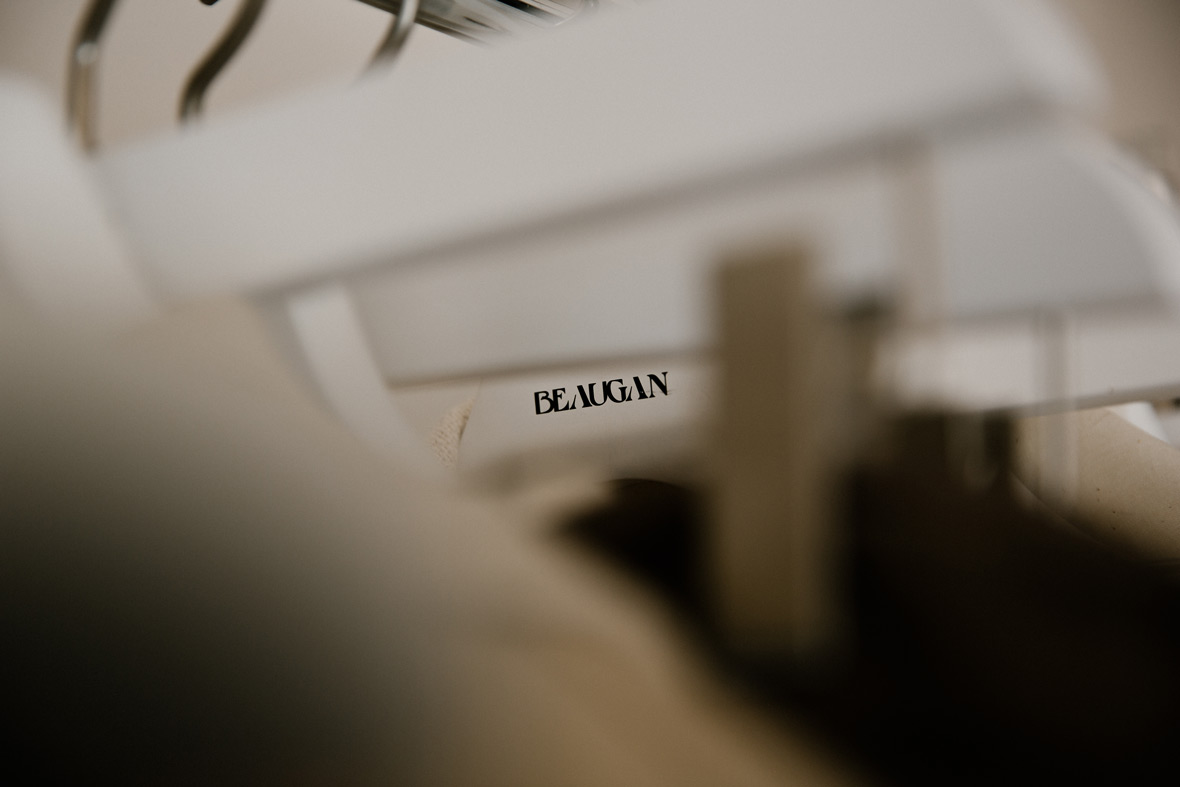
One source of inspiration for Hancy is ankoku butoh, a Japanese dance form created by Tatsumi Hijikata in the late 1950s as a reaction to the postwar fascination with Western culture. Hijikata wanted to resurrect the idea behind kabuki theater, which traditionally was entertainment for everyday people and similar to television soap operas. Unlike noh theater, which was for the elite in Japanese society, kabuki was for everyone. “Hijikata wanted to recreate that spirit of the man and woman on the street,” Hancy explains. “He was inspired by his grandmother walking through the mud when she was planting rice, working the rice field hunched over. He saw this kind of movement, this painful, slow, struggling movement, as something that’s beautiful.”
For Hijikata, ankoku butoh was the opposite of the ethereal lightness idealized by ballet. It’s about human struggle on Earth depicted as something beautiful. “It sounds horrible, but the world is a struggle. We have to live through the world somehow, through the struggle. He was being pure to that in a way,” Hancy explains. He’s inspired by its popular roots: “it’s born from the dirt. It comes from people themselves and their ingenuity.”
我想 Christopher 之所以选择 “Bogan” 这个词,可能与他对日本暗黑舞踏 (Ankoku Butoh,又称舞踏) 的兴趣有关。日本在二战战败后,整个国家在意识上再次追随西方社会和现代化(正如 1868 年的明治维新那样)。就舞蹈而言,这意味着芭蕾被视为是最美丽的舞蹈形式。而暗黑舞踏则是由土方巽 (Tatsumi Hijikata) 在 50 年代末期为了抗议人们崇拜欧洲文化多于日本文化而创作的。土方巽希望复兴歌舞伎剧场背后的理念。传统上,歌舞伎剧场的目标是娱乐普通百姓,这一点跟电视上的肥皂剧一样。能剧(Noh)服务日本社会的精英阶层,而歌舞伎则是服务所有人。Christopher 告诉我:“土方巽想要重现街头上平凡男人和女人的精神,激发他创作灵感的是他的祖母在种植水稻时,在泥中行走、弯着腰干活的动作。在他看来,这一种充满痛苦、缓慢的、挣扎的动作也是美丽的。”
对土方而言,暗黑舞踏是芭蕾舞那种理想化的轻盈优雅的对立面。暗黑舞踏讲述的是人们在地球上的斗争,并将之视为一种美。“虽然听上去很可怕,但世界本身就是充满挣扎。我们必须以斗争的方式来在世界上生存。在某种程度上,土方只是纯粹地展现出这一点。” Christopher 说,他之所以觉得土方的想法如此有启发,是因为 “它是从泥土中诞生的。它来自人们自身及其创造力。”
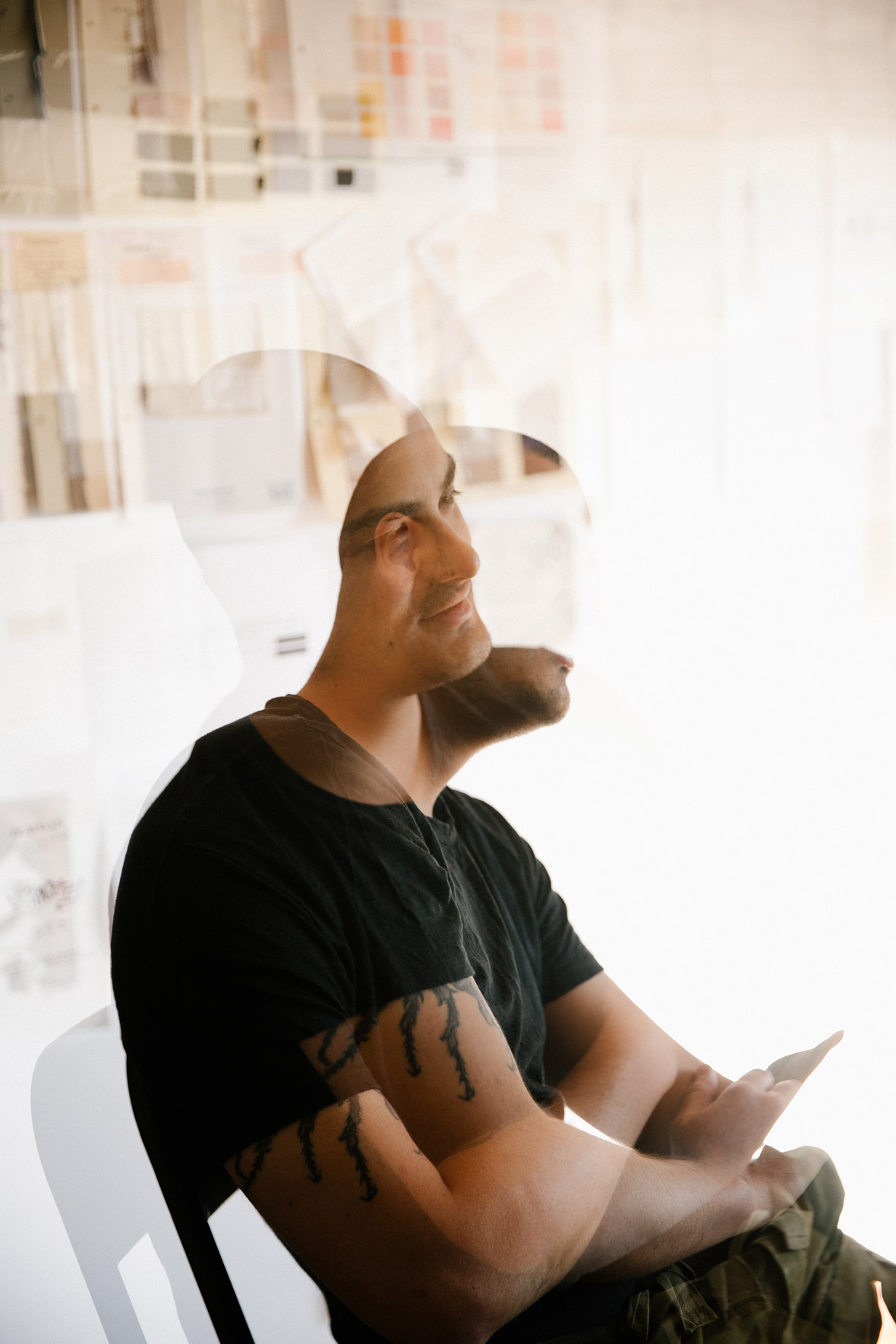
With BEAUGAN, Hancy wants to put something out in the world that’s beautiful and desirable in a way that isn’t gimmicky or excessive. “I want all the design processes to be there for a reason. There’s a reason the shape is cut like this or the pocket is assembled like that. Everything is really thought out,” he says. Like anoku butoh, BEAUGAN is “born from the dirt”: the dorozome process means the garments are literally transformed by mud. All the choices Hancy makes are intentionally focused, as much as possible, on origins. He starts his design process by thinking about the needs and life of the wearer, rather than envisioning a final surreal photo campaign or fashion week presentation. “I really think about the person that’s going to wear it,” he says. “I think that’s something that fashion has kind of lost.”
“出于污泥” 很好地诠释了 BEAUGAN 的品牌理念。Christopher 希望能通过 BEAUGAN,以一种非噱头式的方式,将世界的美呈现出来。“我希望所有的设计过程都是有原因的。为什么要剪出这样的轮廓、为什么要将口袋设计成这样。一切都是经过深思熟虑的。” 正如字面意思,泥染的过程就是让服装在泥土中蜕变,Christopher 在做选择时也会尽可能地有意突显其本意。Christopher 会先去思考穿著者的需求和生活,而不是先去设想如何拍出震撼的广告宣传照、或是如何在时装周上展示,“我会去考虑那些真正会穿上它的人。我觉得这一点是当下时尚界所缺乏的。”
“It sounds horrible, but the world is struggle. We have to live through the world somehow, through the struggle.”
“虽然听上去很可怕,但世界本身就是充满挣扎。我们必须以斗争的方式来在世界上生存。在某种程度上,土方只是纯粹地展现出这一点。”
Hancy takes a philosophical view of clothing. A person’s identity begins with the way they think, he says. Next, if you’re religious, it’s a person’s spirit. After that comes the way we perceive ourselves physically. And the last layer, coming between our physical perception of ourselves and the rest of society, is clothing.
“We always actively engage with, ‘Who am I hanging out with? Is this person a good person or a bad person? Am I being a good person? What’s . my relationship? How’s it working out?’ We stress about that,” Hancy says. Clothing is the layer that comes between ourselves and other people. “It’s like an amoeba. This kind of cellular organism has a cell wall that allows things to go in or out. The way we dress ourselves is like how we define that cellular wall.”
BEAUGAN is built around this view. “I feel that if we can be responsible for who we are internally, then we can be responsible for who we are externally. Why don’t we think about clothes in the same way?” he asks
Christopher 对于身份认同问题有过深入的哲学思考。他认为人的身份认同,应该从内心开始,然后向外推进。他告诉我说,身份认同始于一个人的思维方式,接着,如果一个人有宗教信仰,就是其精神世界。之后就是我们对自己身体的认知。最后,在我们对自我身体的认知和社会上其他人之间,所隔着的就是服装。Christopher 指出,个体常常会考虑他们与其他人交流的方式。
“我们经常会思考,‘我身边都是些什么人?是好人还是坏人?我是不是一个好人?我的人际关系怎样?我们相处得如何?’我们会很强调这一点。” 而服装是我们和其他人之间的隔层。“这就像变形虫。这种细胞生物有一面细胞壁,让外物进入或出去。我们的穿着方式正是我们对这个细胞壁所下的定义。”
BEAUGAN 正是他对这一理念的表达。“我觉得,只有当我们可以对自己的内心负责,才能对自己的外表负责。为何不在服装方面也用同样的方式思考?”
His belief that clothing is a part of one’s identity resonates most strongly with people outside but adjacent to the fashion industry: writers, graphic designers, architects, photographers, artists, and small business owners. Hancy wanted to create clothing for a new market not already targeted by the industry. Fashion, as he sees it, has a long history of telling people that they can’t be themselves, and now people are pushing back. “Why can’t I just be me? Why do I have to be a pop star or look like a magazine image? Why is it valuable to be someone else?” He sees choosing clothes as a creative process. “You can really bring the most out of yourself. You can create yourself visually, which is a beautiful thing.”
这种将穿着视为一种自我认同方式的思考,最能与一些邻近时尚的职业,譬如作家、平面设计师、建筑师、摄影师、艺术家以及小企业主产生共鸣。Christopher 想为一群新的消费群体设计服装 ,他瞄准的不是那些已经被时尚行业所瞄准的人群。在他看来,时尚有很长的历史都是在告诉人们 “他们不能成为自己”,而现在人们开始起身反抗。“为什么我就不能是我呢?我为什么要成为这个歌星、或者看起来像这本杂志上的模特?为什么成为别人就那么重要?” 关于时尚到底能为个体带来怎样的作用,他说:“你确实可以通过时尚呈现出自己最好的一面。你可以在视觉上重塑自己,这是一件很美好的事情。”
“Why can’t I just be me? Why do I have to be a pop star or look like a magazine image?”
“为什么我就不能是我呢?我为什么要成为这个歌星或者看起来像这本杂志上的模特?为什么成为别人就那么重要?”
Living in Japan has let Hancy recreate himself. He tells me he could live anywhere but finds Japan’s history and philosophy especially beautiful and interesting. “I’m glad to be in this situation, because it gives me so much fluidity and the possibility to move in different groups. I can be whoever I am. There’s a freedom of not being burdened,” he says.
In Japan, Hancy is figuring himself out first—away from places that would have more expectations on his behavior. “By investigating things historically, here or in Europe or wherever, I can start to work out how to do the same in regard to Australian history, or my own history,” he explains.“I’m trying to learn about myself through learning about others: other cultures, other groups of people, what others are doing.”
到了此时,在日本生活的经验已经重塑了 Christopher。他说自己可以在世界上任何地方生活,但日本这个地方有着深厚历史和哲学思想,特别迷人和有趣。“我的想法是,通过探索日本、欧洲、或是任何其它地方的历史,我可以了解到、或是明白如何去认识澳大利亚历史,或是我自己的历史。这是一种学习,这就是我想做的事情。我想借由了解其它事物、文化、人和其他群体,和他们所做的事情,来了解自己。”
按照 Christopher 的说法,比起生活在那些一举一动都要按照别人期望的地方,移居日本更能让他了解自我。“我很满意现在这种状态。因为它给了我很多的流动性和融入不同群体的可能性。我可以成为任何人。这是一种没有负担的自由。”
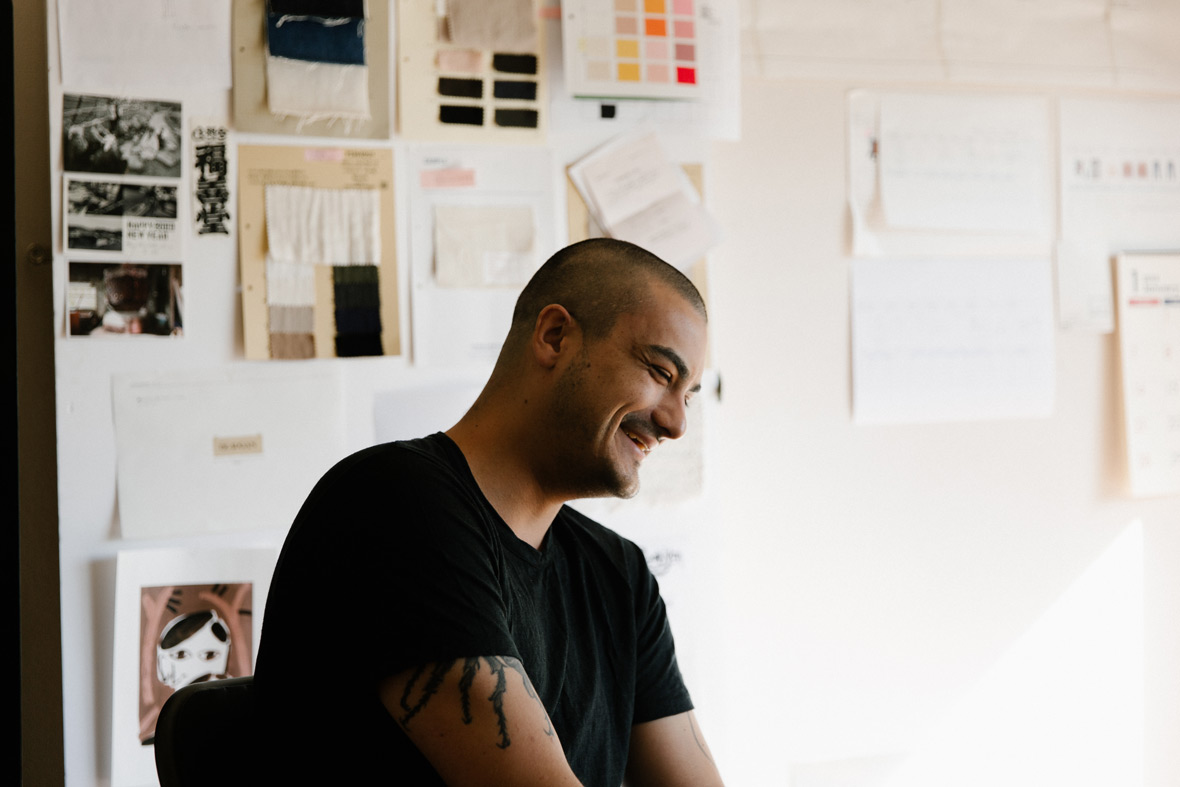
Freedom to form an identity independent of the expectations of history is an idea Hancy wants to unite other people under. “It’s building a community, really. Every group that creates some culture, they want that,” he says. “If you don’t have an identity, you want to find your global family.”
He seeks people who think the same way he does, rather than those who look similar or work in the same profession. “Since the beginning, I’ve had a desire to create a global tribe of people who are like-minded and share the same ideas, the same way of thinking. I want to make a base for that. And I really want it to be a space to encourage creativity, encourage collaboration, and have the idea of exchange.”
BEAUGAN’s designs are imbued with the belief individuals have to create their own identity. They also the embodiment of Hancy’s search for beauty in the natural world. In the future, he hopes BEAUGAN will be a community exchanging ideas to create culture in a way they can’t find elsewhere. “I want substance and I want quality,” says Hancy. “I created a brand to achieve that. Hopefully, I’m getting there.”
自由地去塑造自我身份,抛下过去或时尚界的期待,Christopher 想要将怀有这样渴望的人都聚集起来。“说真的,这是在建设一个社区;这是每个人的梦想。每一个创造某种文化的群体都希望这样。如果你缺乏身份认同,你会想找到属于你的大家庭。”
作为一个选择离井别乡的澳大利亚人,和一位厌倦于现状的时装设计师,Christopher 在寻志同道合的人,不仅仅是那些外表相似或在同一行业工作的人。“从一开始,我就有这样的愿望: 建立一个志同道合的全球部落,之中的人有同样的想法和思维方式。我想为此创建一个基地,然后在这基础上将它变成一个鼓励创新、合作与交流想法的平台。”
BEAUGAN 作为一股 “时尚逆流”,其服装蕴含着设计师让人重塑自我身份的意图。同时,它也是一种个人的思维和生活方式,诠释着 Christopher 对于自然之美的追寻。在未来,Christopher 希望让 BEAUGAN 成为一个让人们交换想法的社区,让他们以在其它地方无法实现的方式,共同创造一种文化。在我们的聊天中,Christopher 明确指出他已经抛弃的想法,以及他现在的立场。即使他的最终理念现在也未成形。“我想要言之有物的作品和好的品质。为此,我创立了一个品牌。但愿我能成功。”

